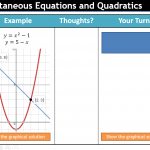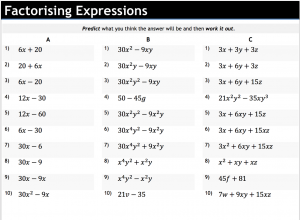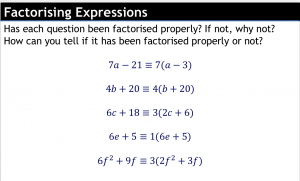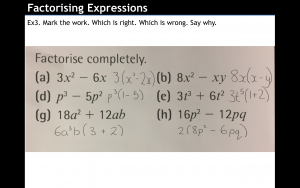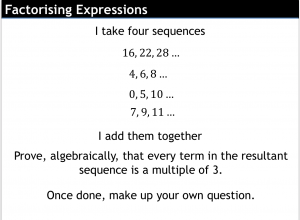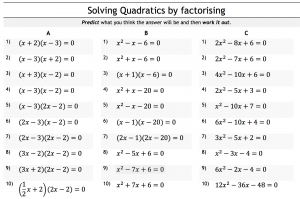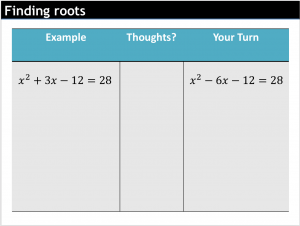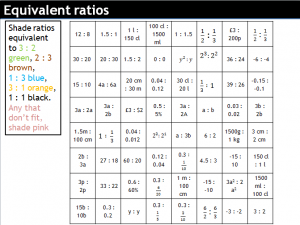THE LESSON IS HERE.
This lesson was a massive learning curve for me and I’ve massively changed it after I taught my year 10s.
The first version of the lesson presented an example problem pair and asked them to get on with a variation activity. How hard could plugging numbers into a formula be? Well, it turned out the lesson was a little rubbish, and students really struggled.
After the lesson I got to thinking why.
I think I had not thought deeply enough about what can go wrong in the quadratic formula.
Specifically, I did not make it explicit enough that a, b and c contain not just the coefficients of x squared, x and the constant. They also contain their direction. In the equation  , b is -3, not 3.
, b is -3, not 3.
I wrote an activity to tackle this and added it in when I retaught it the following day. It went a lot better.

There was also confusion around a negative b going into the -b bit of the formula. It just shows, I’ve been teaching 7 years but there’s always stuff to learn and think about. Often things we think are straightforward are anything but to our students.
I’m also not sure how good the vary and twist activity is [available here].
I have split it into two sections on the PowerPoint, surely a sign it should really be two worksheets. However, I’ve still left it as one, for printing reasons.
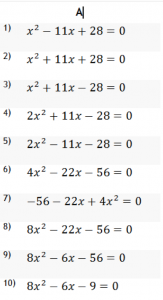

I also wrote some questions I thought were lovely.
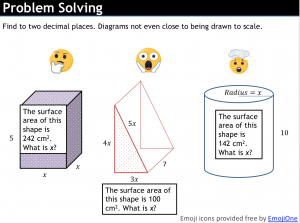
There’s quite a bit to discuss here. I like the emoji format. Does that middle question need to 5x on the diagonal? I don’t know if removing it makes the problem better.
These proved very challenging for students. I really should have scaffolded more, but I’m not sure how I could have without giving the game away and making the questions trivial. Some students liked these problems. Quite a few didn’t engage. It was hot and after break.
I’m still sharing the lesson here, with adaptations I’ve made. Maybe you’d like to make your own. Again, I’ve tried to go into more depth with things like the number of roots.
There’s also a set of timed questions here. Again, this is picking from a couple of thousand questions. It also picks from a database so you should never see repeat questions or nonsensical questions. I’ve done the four levels like so
Level 1 : Naming a, b and c
Level 2 : Solving a simple one
Level 3 : Introducing negatives
Level 4 : Number of roots
A long time project might be to adapt this resource so you can choose the number in each skill level to display.
Please comment with any suggestions.


